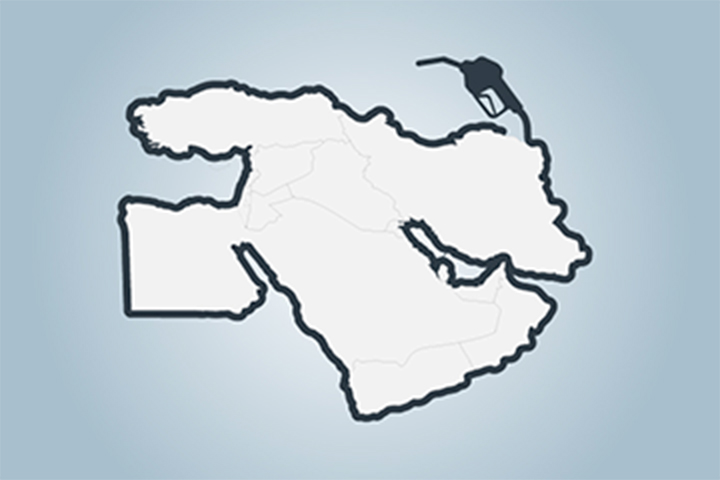Will ultra-low interest rates make a comeback? Probably not…

Keytrade Bank
keytradebank.be
May 16, 2024
(updated May 22, 2024)
3 minutes to read
In the wake of the financial crisis, the European Central Bank (ECB) kept interest rates at a low and even negative level for years. This was necessary to revive the economy. By discouraging savings and making borrowing attractive, the ECB wanted to stimulate consumption and investment.
During the coronavirus crisis, the ECB even went a few steps further by easing its policy even more. To everyone’s surprise, the economy picked up much faster than expected. Due to supply problems, inflation also rose sharply with barely any warning. It was so sharp, in fact, that the ECB had to shift directly from reverse into fourth gear, raising its key rate at an astounding pace. It increased rates 10 times in just 14 months.
These interest rate hikes worked as intended. Inflation is slowly but surely cooling off and economic growth is slowing down in the eurozone. However, to avoid growth slowing down too much and inflation falling too far, the ECB is beginning to think once again about lowering its key rate. Most analysts expect a first rate cut in June 2024 (although this is not set in stone). It is also unclear how many times and how rapidly the ECB will cut rates after that. Most analysts agree, however, that the ECB will not return to ultra-low or even negative interest rates. There are several reasons for this:
• Various trends mean that governments will have to borrow more over the next few years and decades. Governments will need more money to cope with ageing populations, rising defence spending, climate change and other megatrends. Since interest rates are also subject to the effects of supply and demand, this will exert upward pressure on interest rates.
• The future economic context is more inflationary than deflationary. The free movement of labour, goods and capital (globalisation) seems to be decreasing or at least changing. This may lead to higher production costs and thus to higher prices, which drive inflation and therefore may also lead to higher interest rates.
• We are in the middle of a new commodities supercycle. After the pandemic, there was initially a sharp rise in commodity prices, followed by a slight downward correction. Most commodities have started to rise again very recently. And with rising commodity prices comes higher inflation. This is another reason why interest rates will not return to their ultra-low pre-2020 levels any time soon.
• Interest rates act on the economy as an accelerator or brake. When there is little or no economic growth, lower interest rates act as an accelerator. On the other hand, if the economy heats up too quickly and inflation rises too far, a rate hike acts as a brake. After 2008, many countries experienced limited growth, which led to low interest rates. In addition, in the decade from 2010 there was a growing conviction that future growth in productivity would be slower than before the financial crisis. This is important because interest rates are always future facing; interest is actually a price that represents the cost of having money now rather than in the future. However, with the rise of artificial intelligence, expectations have changed recently. For the first time since 2008, there is optimism that productivity growth could improve significantly. Of course, this is not yet certain, as even the expectation of higher growth can affect interest rates and therefore keep them higher.
• Seen in a historical context, the current "high interest rates" are not abnormally high. On the contrary, they are really more "normal" or "low". At the beginning of 2000, the deposit rate (the rate that banks receive when they deposit money with the central bank) in the euro zone was 2.25%. Today, it is at a "record level" of 4%. However, if we look at the interest rate policies of the countries that created the eurozone, the overall picture looks more nuanced, historically speaking. Between 1950 and 2000, interest rates rarely fell below 4%. In some years, interest rates even peaked above 10%.
• The recent era of low interest rates was largely the result of the financial crisis. During this period, unemployment reached high levels, demand was weak and inflation was extremely low. In addition to the 2008 financial crisis, the 2020–21 pandemic was one of the biggest economic shocks in modern history. In terms of a decline in production, each of these caused one of the most severe recessions ever. Although the current geopolitical situation remains uncertain, it appears less likely that there will be two crises with a severe impact in quick succession that will require a significant economic stimulus (and low interest rates). Now that inflation has finally arrived, the central banks will likely want to avoid inflation cooling off too much again.

What do higher interest rates mean for investors, savers and home buyers?
1. Investors
For investors, interest rates are critical because they influence the valuation of different asset classes. Falling interest rates can lead to higher prices for bonds and should also be positive for equities. Rising interest rates are (theoretically) negative for equities and for those who hold bonds.
For anyone who wants to buy bonds, a high interest rate is positive: a high interest rate makes equities generally less attractive than bonds. This is because bonds are less risky while at the same time providing a decent return. In the current climate, bonds in particular are much more attractive than they have been over the last decade. Please note that interest rates are not the only factor that influence the valuation of equities and bonds; many other factors also play a role.
2. Savers
Savers have seen meagre returns on traditional savings accounts since the financial crisis. This changed very recently. If interest rates remain higher, they should also see this reflected in their savings deposits. However, a change in interest rates at the level of the ECB does not necessarily lead immediately to a change for savings accounts.
3. Home buyers
The impact on home buyers is significant because interest rates are closely linked to the ECB’s key rate. A higher interest rate leads to higher mortgage costs, which can affect the affordability of homes. This could dampen demand for housing and possibly lead to house prices stabilising or even falling. However, if interest rates fall, this would benefit home buyers by reducing borrowing costs. On the other hand, this in turn can also lead to an increase in demand for properties, and potentially result in higher house prices.


